Tidbit thoughts, facts, and stories will be posted here! Keep a lookout!
 Tidbit I
Tidbit I
Galway is written as "Gaillimh" in Irish, and is nicknamed "The City of Tribes" (or Cathair na dTreabh) in honor of the fourteen tribe families (Athy, Blake, Bodkin, Browne, D'Arcy, Deane, Ffont, Ffrench, Joyce, Kirwan, Lynch, Martin, Morris and Skerritt--as seen here represented by flags in Erye Square) that ruled the region during the 13th to the 16th centuries.
"Claddagh" is an area near the main part of Galway City, and is
famous for the Claddagh Ring. The ring depicts a heart topped by a crown, being held by two hands. The heart represents love, the crown represents loyalty, and the hands represent friendship. If a person wearing the ring is taken (in terms of a relationship/ civil agreement with someone else) the bottom of the heart points in towards them. If they are available, the bottom of the heart should point outwards.
famous for the Claddagh Ring. The ring depicts a heart topped by a crown, being held by two hands. The heart represents love, the crown represents loyalty, and the hands represent friendship. If a person wearing the ring is taken (in terms of a relationship/ civil agreement with someone else) the bottom of the heart points in towards them. If they are available, the bottom of the heart should point outwards.
Tidbit III
 Galway Hookers (I have yet to find out really why they were named that) are traditional fishing/trading boats known for their black hulls and red/brown sails. The small, versatile vessels date back hundreds of years and can still be seen in use today. In honor of the boats, there is also a beer that was given the name "Galway Hooker" that has received numerous awards for its pale ale appeal.
Galway Hookers (I have yet to find out really why they were named that) are traditional fishing/trading boats known for their black hulls and red/brown sails. The small, versatile vessels date back hundreds of years and can still be seen in use today. In honor of the boats, there is also a beer that was given the name "Galway Hooker" that has received numerous awards for its pale ale appeal.
Tidbit IV
"Gaeltacht" is an Irish/ Gaeilge word referring to an Irish-speaking region of the country.
Tidbit V
Ireland is very green/ eco-friendly. You usually have to pay for plastic bags, or bring/ buy a reusable bag for shopping, and recycling bins are as readily available as trash cans.
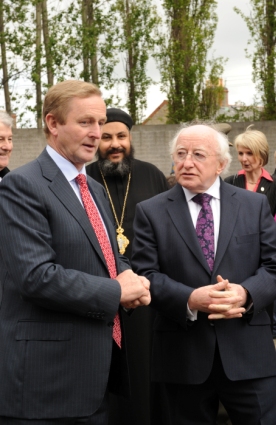 |
Tidbit VI
Ireland's government is based on the Constitution of Ireland. They have both a President (Michael D. Higgins, on the right in the photo) and a Taoiseach/ Prime Minister (Enda Kenny, on the left). The Taoiseach is considered the head of the government, where the President is considered the head of state (and is largely a ceremonial position.) They also have the Ministers of the state (executive) and the Oireachtas (the Irish parliament/ legislature.)
Tidbit VII
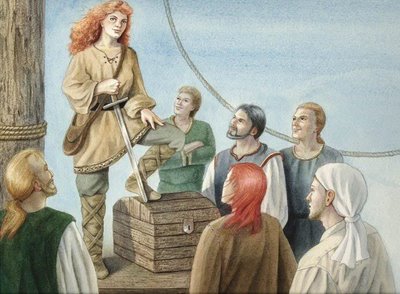 Once upon a time there was an Irish woman called Grace O'Malley (also called Granuaile). She was, and is, considered one of the most famous Irish women and one of the most notorious pirates to have ever lived. Known for her rebellious spirit, she is called the "Pirate Queen" and it is said that she was a fearless (and a greatly feared) captain and commander, as well as an incredibly skilled sailor and fighter. Serious woman power right there.
Once upon a time there was an Irish woman called Grace O'Malley (also called Granuaile). She was, and is, considered one of the most famous Irish women and one of the most notorious pirates to have ever lived. Known for her rebellious spirit, she is called the "Pirate Queen" and it is said that she was a fearless (and a greatly feared) captain and commander, as well as an incredibly skilled sailor and fighter. Serious woman power right there.
Tidbit VIII
The Proclamation of the Irish Republic, declaring Ireland's independence from the United Kingdom, was issued (by the Irish Volunteers and the Irish Citizen Army) in 1916 during the Easter Rising. Ireland did not gain their independence as a free state until 1921. However, Northern Ireland withdrew from the free state and remains today a part of the United Kingdom--not the Republic of Ireland.
The Irish Flag/ the Irish Tricolour was first used officially during the Easter Rising of 1916. The green represents the Irish catholics (because green was the chosen color of revolutions in Ireland), the Orange represents the Irish protestants (because of Northern Irish Protestants' association with William The Orange), and the White represents peace between them.
Tidbit X
The Irish National Anthem is called "Amhrán Na Bhfiann" or "A Soldier's Song." Want to hear it? I thought you might:
"The Pale" was a part of Ireland (mostly around modern-day Dublin) that was completely English-controlled during the Middle Ages--a no rebellion, protestant, English-speaking area. Thus the saying "Beyond the Pale" or "Outside of the Pale" was referring to the areas of Ireland outside of that area--which were considered to be wild, unruly, and unbelieveable. People will still sometimes refer to Dublin or surrounding areas as "The Pale."
Tidbit XII
Irish dancing was popularized by the 1994 show Riverdance performed when Ireland hosted the Eurovision song competition.
Here is the link to the first Riverdance show that introduced Irish dance to the world:
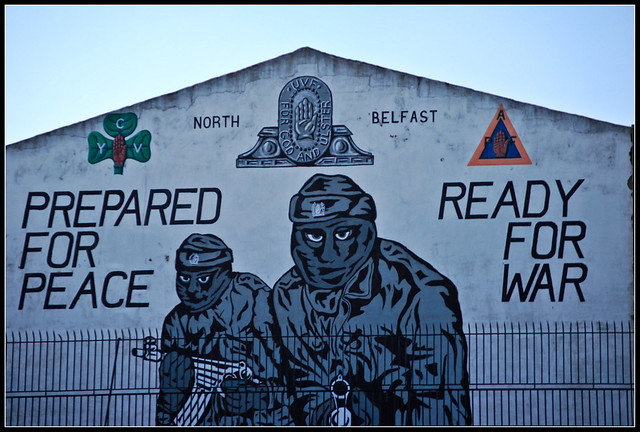
Tidbit XIII
"The Troubles" is the name given to the conflict in Northern Ireland (primarily between the Catholics and Protestants) starting in the late 1960's, and ending in 1998 with the Good Friday Agreement. Some 3600 people were killed during the conflict, and thousands of others were injured in various attacks and struggles.

Sidenote: Many credit President Bill Clinton with helping with the peace process in the 90's and praise his efforts and support. He was also the first President to visit Northern Ireland.

Tidbit XII
Irish dancing was popularized by the 1994 show Riverdance performed when Ireland hosted the Eurovision song competition.
Here is the link to the first Riverdance show that introduced Irish dance to the world:

Tidbit XIII
"The Troubles" is the name given to the conflict in Northern Ireland (primarily between the Catholics and Protestants) starting in the late 1960's, and ending in 1998 with the Good Friday Agreement. Some 3600 people were killed during the conflict, and thousands of others were injured in various attacks and struggles.

Sidenote: Many credit President Bill Clinton with helping with the peace process in the 90's and praise his efforts and support. He was also the first President to visit Northern Ireland.

Tidbit XIV
There are 4 provinces in Ireland and 32 counties (26 in the Republic of Ireland, 6 in Northern Ireland). The provinces are: Ulster, Leinster, Munster, and Connacht/ Connaught.
Each province also has its own crest/ flag. The Ulster flag features the gold background with a red cross (likely taken from the coat of arms of the Burkes family) and the Red Hand of Ulster (likely from the O'Neill dynasty.) The Leinster flag features the golden Irish harp on a green field (similar to the Ireland coat of arms.) The Munster flag has the three crowns on a blue field (which was the Irish coat of arms until the 16th century, and possibly represents the three medieval lordships of Munster.) Connacht's flag is a divided field with one half featuring an eagle, and the other an arm bearing a sword (origin unknown?)




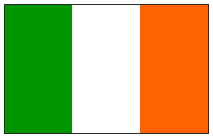
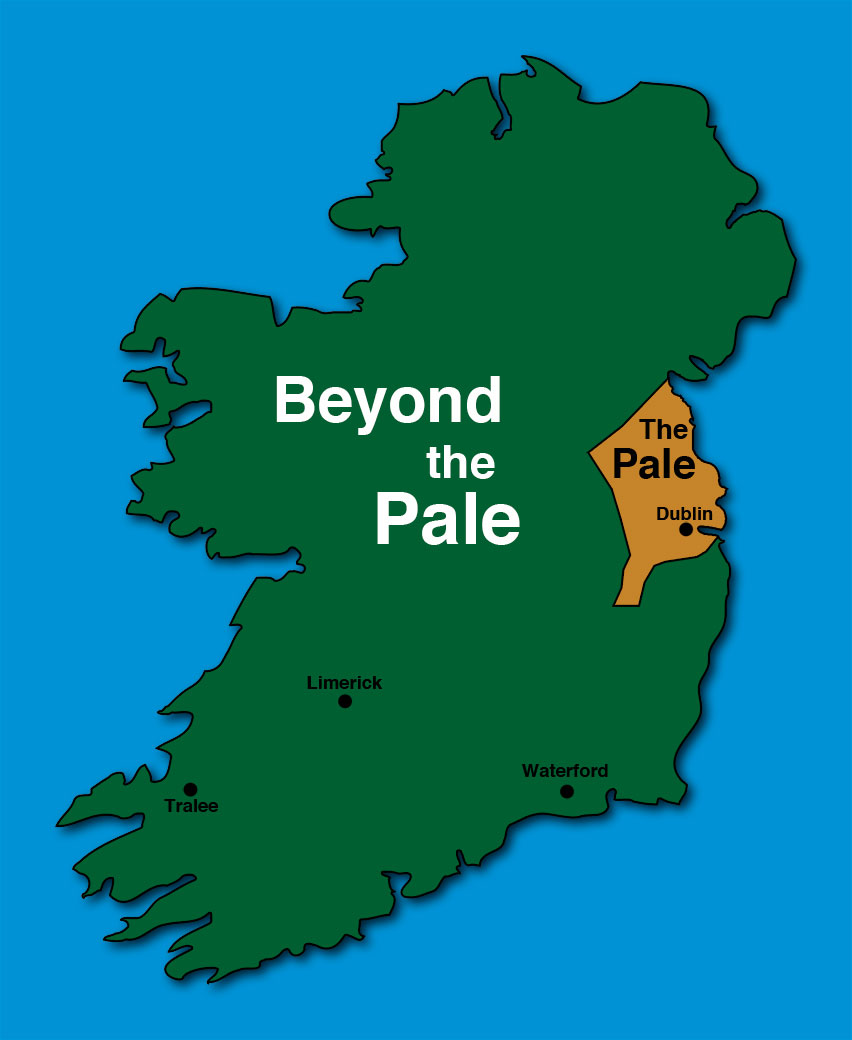

No comments:
Post a Comment